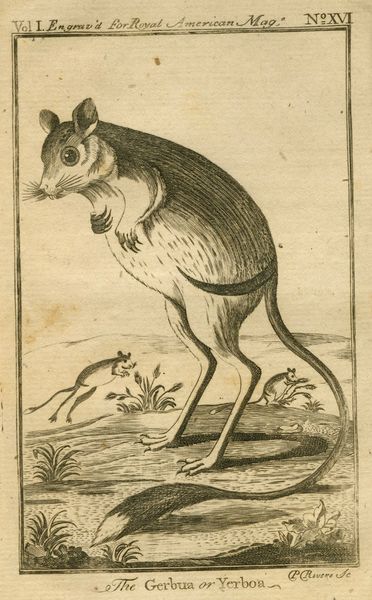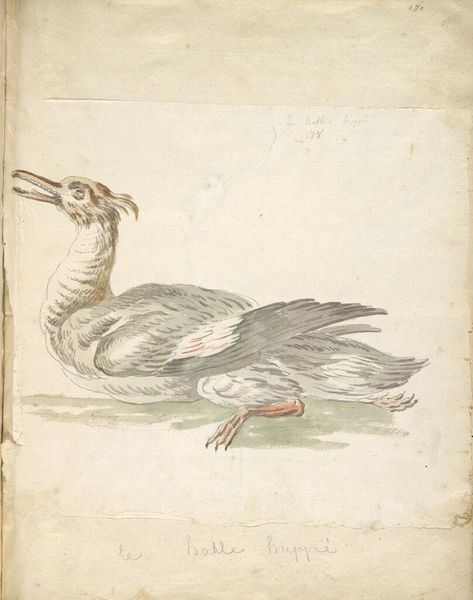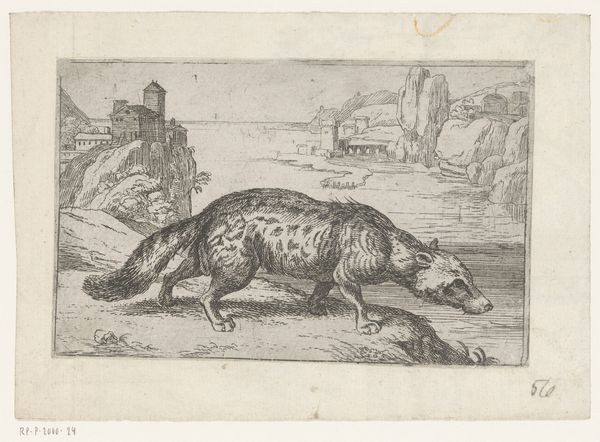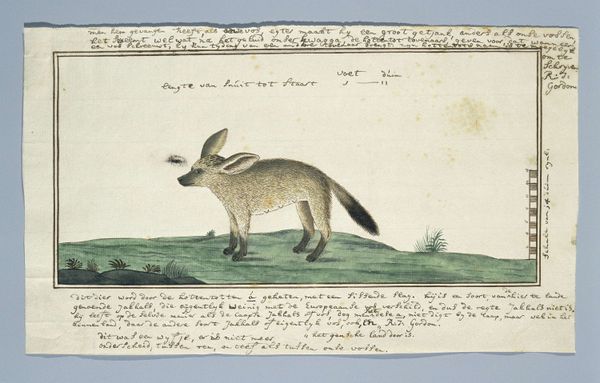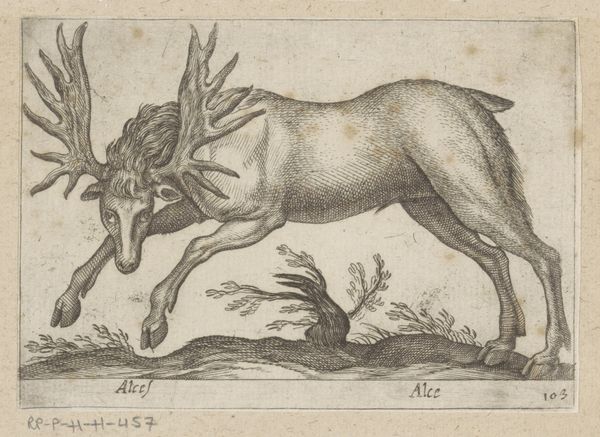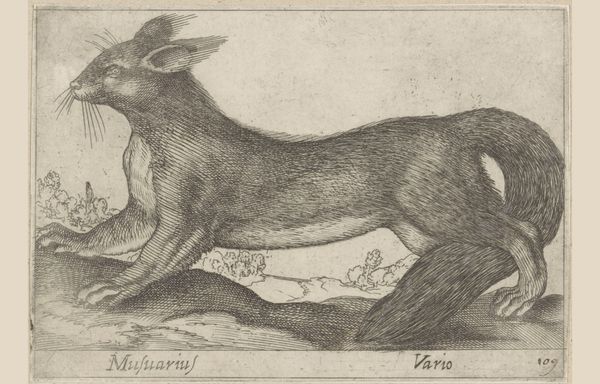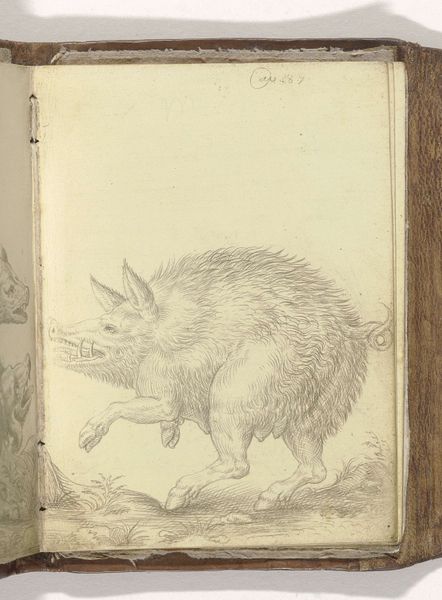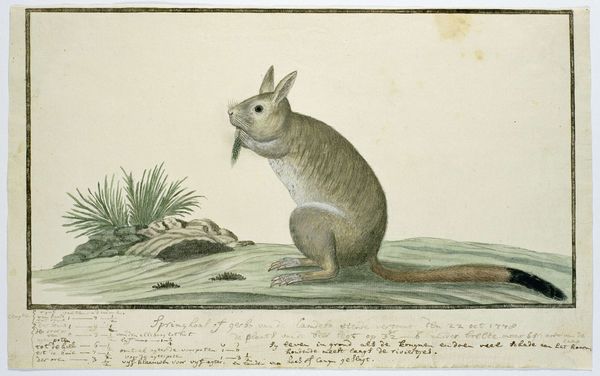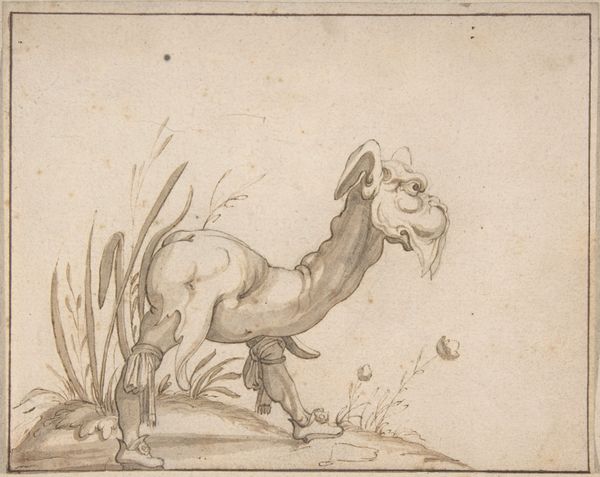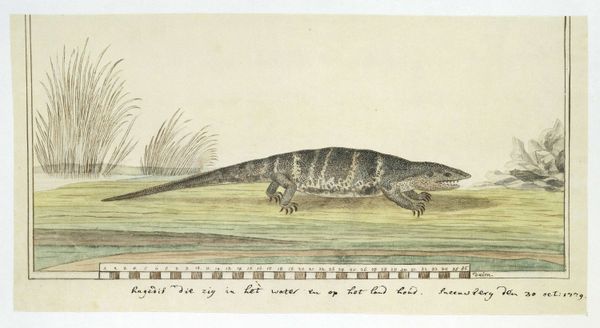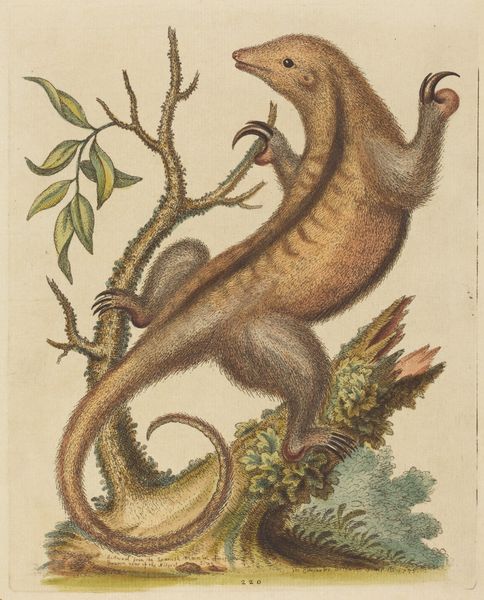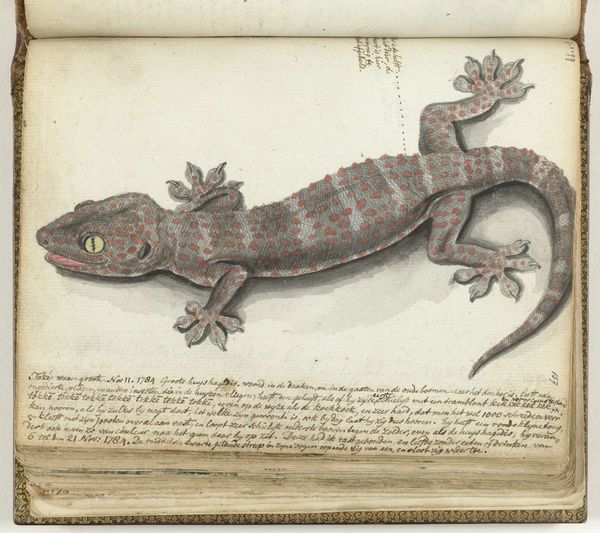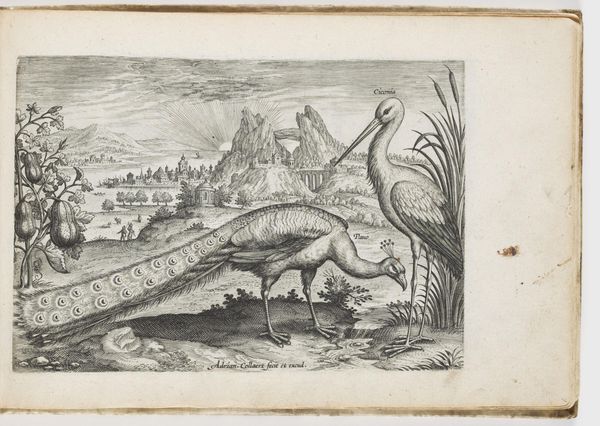
drawing, watercolor, pencil
#
drawing
#
aged paper
#
toned paper
#
light pencil work
#
pencil sketch
#
personal sketchbook
#
watercolor
#
coloured pencil
#
pencil
#
sketchbook drawing
#
watercolour illustration
#
naturalism
#
sketchbook art
#
watercolor
Dimensions: height 660 mm, width 480 mm, height 332 mm, width 440 mm, height 310 mm, width 425 mm
Copyright: Rijks Museum: Open Domain
Curator: This intriguing drawing, "Orycteropus afer (Aardvark)", attributed to Robert Jacob Gordon, dates back to possibly 1777-1788 and features pencil, watercolor, and colored pencil on aged paper. My first thought: it reminds me a little of an illustration from a children's story. Editor: There's a captivating blend of scientific observation and almost whimsical rendering here, I think. The textures are fascinating given that he is primarily working with pencils and watercolor. Curator: Indeed, the light pencil work creates a sense of depth, particularly in the aardvark's skin folds, emphasizing its materiality. The use of toned paper also speaks to the resources available to Gordon at the time, telling a subtle story of colonial-era production. And it grounds it nicely in a feeling of old world academia and production methods. Editor: I agree. Placing this work within the context of colonial-era exploration is key. Gordon, as a commander in the Dutch East India Company, was positioned within systems of power and knowledge production that inevitably influenced his depiction of the natural world. We must acknowledge the dynamics inherent in how the colonizer perceives and portrays the colonized environment and its inhabitants. The very act of documenting serves the empire, you could say. Curator: That colonial context undeniably shaped the artistic process itself. Think about the journey of acquiring these materials, mixing pigments... the whole enterprise speaks to global networks of trade and labor. It’s also fascinating to see how Gordon navigates this tension between detached scientific observation and imbuing the creature with almost anthropomorphic features. Editor: Precisely. There’s also an interesting question around accessibility of scientific knowledge itself during that period. This drawing isn't just about depicting the aardvark but participating in defining what is 'known' about it for European audiences. What indigenous understandings were perhaps supplanted in this representational act? Curator: It really forces us to reflect on the historical context. The creation of this artwork speaks volumes about the cultural and economic frameworks of its time. Editor: Absolutely. This is more than just a drawing of an aardvark; it is a testament to the complex web of social, political, and representational forces at play in the 18th century.
Comments
No comments
Be the first to comment and join the conversation on the ultimate creative platform.
